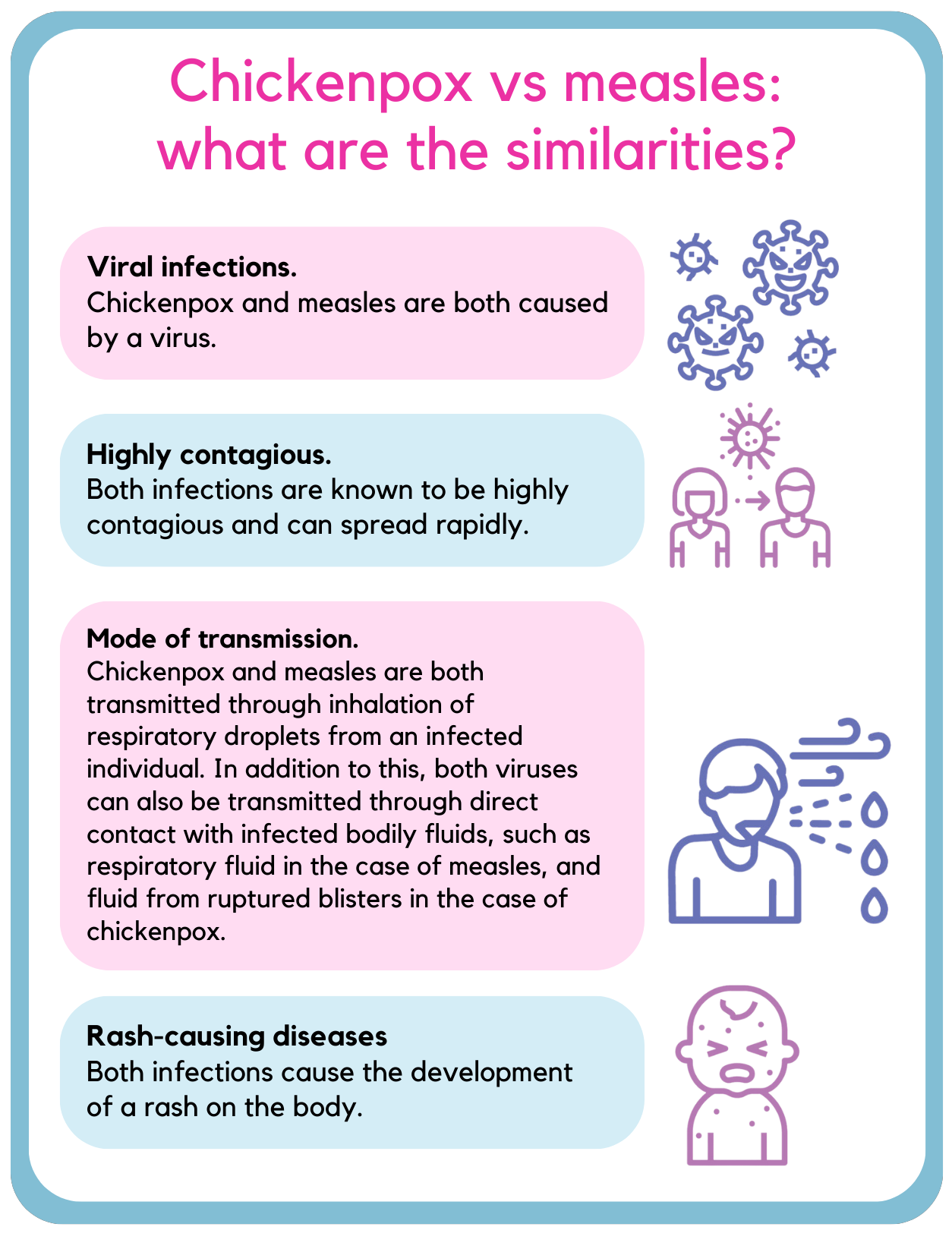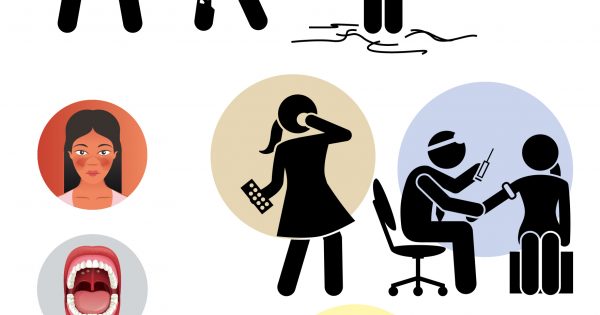Chickenpox and measles infections in children can look similar to one another, especially during the early phases of infection. This can make it difficult for parents to distinguish between the two infections. Understanding the difference between these two illnesses is crucial for timely and appropriate care.

Chickenpox vs measles: what are the differences?
Difference #1: Cause of infection
Chickenpox and measles are caused by two different viruses. Chickenpox is caused by the varicella-zoster virus, while measles is caused by the measles paramyxovirus.
Difference #2: Type of rash
The type of rashes produced are different from each other. Chickenpox often begins with raised red spots on the chest, stomach, face, and back. These can then develop into fluid-filled blisters, which may rupture and leak fluid, ultimately forming scabs. In contrast, measles usually starts with a flat, red, and blotchy rash on the forehead that can spread to other parts of the body.
Difference #3: Associated symptoms
Apart from the development of rashes, children infected with chickenpox and measles can also have additional symptoms. Those infected with chickenpox often have headaches, loss of appetite, and fatigue. This is not commonly seen in those infected with measles, who are more likely to develop a runny nose, sore throat, and cough instead.
Difference #4: Duration of infection
Chickenpox tends to last for a relatively shorter period, usually around 4-7 days. In contrast, measles may persist for a more extended period, typically lasting 10-12 days, and in some cases, it can even last for several weeks.
How are chickenpox and measles treated and prevented?
Treating chickenpox and measles in children focuses on easing symptoms and reducing complications. This includes taking medications like paracetamol for fever and pain relief, preventing night time scratching by wearing gloves, as well as taking a cool bath to alleviate itching.
One of the best preventive measures available to us are vaccines against chickenpox and measles. For chickenpox, the varicella-zoster vaccine is used. This vaccine is not included in the national immunisation programme (NIP) but is available upon request at many private clinics and hospitals. The chickenpox vaccines are administered from 12 months onwards.
For measles immunisation, the MMR (Measles, Mumps, and Rubella) vaccine is used. This vaccine is included in the national immunisation programme (NIP) and is administered at 9 months old and again at 1 year old. To learn more about vaccines for measles and chickenpox, speak with your healthcare provider or paediatrician.
Conclusion
As chickenpox and measles infections in children can appear similar, parents play a crucial role in recognising the differences between the two. Understanding these differences is vital for ensuring timely and appropriate care for their children’s health. By being vigilant and informed, parents can take the necessary steps to protect their children and seek medical attention when needed.






